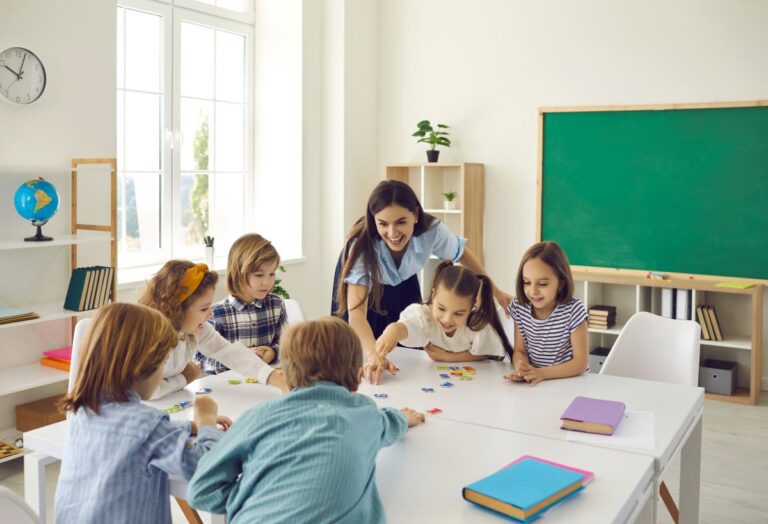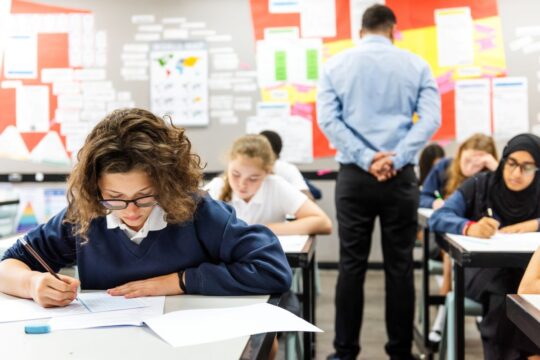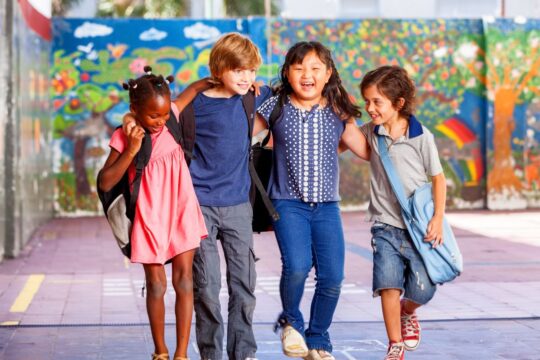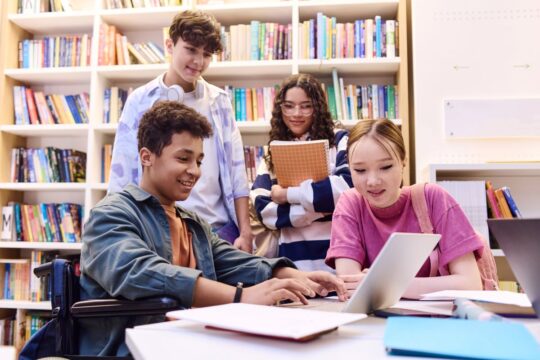Learning is like a game; it has rules, levels, and sometimes rewards. Just like in gaming, students need to understand the rules to “level up” or succeed, work their way through challenges that gradually increase in difficulty, and celebrate milestones along the way.
Gamification, or bringing game-like elements into learning, has become a popular approach because of the way it motivates learners. When done right, gamification is more than just handing out points and badges; it completely transforms the way students connect with their learning.
Why does gamification work?
Gamification works because it leverages core psychological principles of motivation, like a sense of achievement and purpose, that are naturally present in video games. Gaming experts are on to something because they know how to hook and engage children.
When you introduce gaming elements into your lessons, you are creating an exciting learning experience for students. Instead of just completing tasks because students were told to, they take on missions, overcome obstacles, and work toward a clear, set end goal.
Think about how children like to play video games over and over again until they finally succeed. Applying gaming elements to your lessons fosters persistence and determination. When learning is framed in a game-like structure, hopefully, children will have the same persistence and determination.
How can you gamify beyond just points and badges?
Gamification typically involves points and badges for completing tasks. While this is a great way to add excitement to lessons, it’s not enough to transform a classroom on its own.
By combining other elements, such as quests or missions that break larger tasks into more achievable steps, or levels that allow students to unlock new challenges, you can make learning feel more interactive and purposeful.
Using Narrative to Frame Lessons
Another powerful tool in gamification is called storytelling. This is when you turn your lesson into a story where students see themselves as the main character on a mission. For example, instead of telling students they will be learning about ecosystems today, you would say, “You are an explorer on a mission who is traveling through different environments, and your main goal is to uncover the best way to survive.”
Ultimately, you are framing your lesson into more of an experience for students rather than having them complete a worksheet. The main goal is to give students a role and purpose behind the assignment so they will be engaged and excited to learn.
Creating Missions and Challenges
One of the most exciting and effective ways to gamify a lesson is to break a lesson into a mission or a challenge. For example, a mission can be to work as a class to complete a set of word problems in order to unlock the next quest.
The key is to design a task that is both challenging and interesting. However, students must be able to achieve it, so it must be within reach, so their progress can move them more towards their goal.
Providing Immediate Motivating Feedback
One of the main reasons games are so engaging is that they provide immediate feedback. Games tell players right away if they have failed or succeeded. This feedback helps them decide if they should try again and keep going.
Gamification can create the same dynamic. Platforms like Quizziz tell learners how they are doing in real time. This immediate feedback helps students make adjustments on the spot. This way, they can see their progress and know exactly what they need to work on to succeed.
Building Collaboration Through Games
Gamification isn’t just about competition; it can also promote collaboration. By setting up team missions or challenges, students are encouraged to support each other rather than compete against each other.
This cooperative gameplay builds teamwork, trust, and communication skills, and helps students see the value in shared achievement, as detailed in recent research on gamification’s effects on student attitudes and cooperative learning.
Practical Ways to Start
If you’re new to gamification, start small, then build from there. These ideas are inspired by best practices in educational technology, as championed by organizations like the International Society for Technology in Education (ISTE). Here are a few ideas.
- Implement a Point System: Introduce a simple point system where students can earn points for effort or mastery. For example, when students complete an assignment, they receive an allotted number of points. These points can then be saved up for rewards or unlock the next “level” of learning.
- Experiment with Badges and Rewards: Badges and rewards are a huge part of gaming because that is when a player knows they have completed a task or achieved a new level. Gaming experts use these incentives to entice players to keep moving forward to the finish line. When gamifying your classroom, use badges as incentives to encourage students to continue raising their efforts, and pair them with rewards to celebrate their progress.
- Create a Classroom Leaderboard: Create a leaderboard that tracks progress toward a shared-class goal rather than ranking each individual student. This way, students work together to achieve something as a team instead of pitting students against one another.
- Use Digital Tools: Digital tools like Kahoot! add game-style energy to learning. They are face-paced and provide students with instant feedback, which helps to keep students on their toes.
Conclusion
Gamification isn’t just about gaming; it’s about understanding the tools that gaming experts use to engage their users to play. Find out what motivates your students, then try to integrate those elements into your daily lessons.
By embedding challenges, providing feedback, and building collaboration, your students will not only feel like they are in a video game, but they will be actively engaged as well.
Frequently Asked Questions (FAQs)
- What is gamification in education? Gamification in education is the process of applying game-design elements and game principles in educational settings to improve student engagement, motivation, and learning outcomes.
- What are the benefits of gamification? The main benefits are increased student motivation, improved engagement, enhanced problem-solving skills, and a deeper connection to the learning material through a sense of purpose and achievement.
- Does gamification work for all age groups? Yes, gamification can be adapted for all age groups. For younger students, it may involve simple point systems and badges, while for older students, it might focus more on complex narratives, collaborative missions, and real-world challenges.
- Is gamification just about competition? No, while competition can be a part of it, gamification also strongly promotes collaboration. Team-based challenges and shared goals encourage students to work together, building essential communication and teamwork skills.
You’ve got important career goals — we have the graduate program to get you there. Check out our available graduate degree programs to advance your career today!




